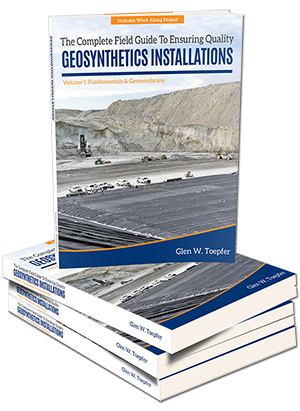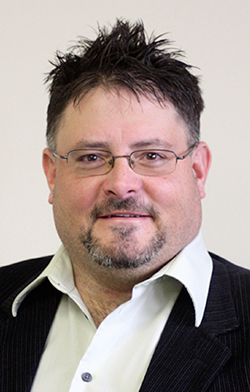 Glen Toepfer’s years in construction quality assurance (CQA) have brought him to a diverse range of geosynthetics installation sites. From conventional landfill and pond liner projects to the massive, multi-layer “zero leak” strategy of the Palo Verde Nuclear Generating Station, Toepfer has seen the good, bad, and ugly that geotechnical engineering works can offer. His field insights have been collected in a new book, The Complete Field Guide to Ensuring Quality Geosynthetics Installations.
Glen Toepfer’s years in construction quality assurance (CQA) have brought him to a diverse range of geosynthetics installation sites. From conventional landfill and pond liner projects to the massive, multi-layer “zero leak” strategy of the Palo Verde Nuclear Generating Station, Toepfer has seen the good, bad, and ugly that geotechnical engineering works can offer. His field insights have been collected in a new book, The Complete Field Guide to Ensuring Quality Geosynthetics Installations.
The 372-page guide’s subhead, “Volume 1: Fundamentals & Geomembranes,” makes it clear that this is not a simple subject, no matter how many millions of square meters of material are installed each year around the world. Each site has its unique design and installation needs, which are inextricably tied to the long-term value of the site. One needs to “build it right from the start,” Toepfer has said on multiple occasions. The guide reinforces that while seeking to strike a balance between quality and cost control.
Finding that balance, Toepfer told Geosynthetica in an interview during the book’s authoring, is one of the biggest issues in the field. One place in which balance is lost is when the role of CQA is misunderstood.
“Too many people confuse the term CQA to actually mean documentation,” Toepfer said. “As such, there are broad instances where CQA has been devalued.”

On the installation side of the profession, organizations such as the International Association of Geosynthetic Installers (IAGI) have established programs to identify the experience and quality of individual installers and companies. They make it clear that installation of a 60-mil high-density polyethylene geomembrane layer requires far more than just a truck and wedge welder.
CQA professionals, however, have no such organization or dedicated program to promote the quality and depth of their work. The cost-control pressures common to any construction and on-going engineered facility have also squeezed at CQA’s value due to some of these misunderstandings about the work and the expertise required to perform CQA well.
Enter Toepfer’s book, which is a natural extension of his “Uncontained” website project in which field experiences (including many unflinchingly honest discussions of how well-meaning operations have erred) are detailed.
Though the book has many pages of material, it has been designed for easy reference. “Keys to Success” summaries are provided in all chapters, shortcuts and pitfalls are identified, data management solutions are shared, more than 20 pages are dedicated to a pictorial presentation of peel incursion calculations, an additional 280 graphics are used to reinforce concepts and field techniques, etc.
Glen Toepfer, C.E.T., is president of CQA Solutions LTD. In addition to the construction quality assurance work, CQA Solutions also provides professional development education sessions and a real-time data collection and validation system (SuperTek) for geosynthetics installations.
The release of The Complete Field Guide to Ensuring Quality Geosynthetics Installations, grounded as it is in real-world examples and experience sharing, including credit to the many lessons Toepfer has learned from other experts on site, is an interesting and welcomed edition to the field.











